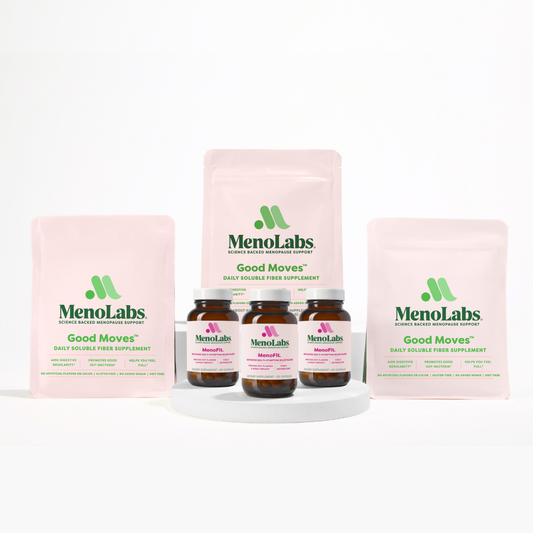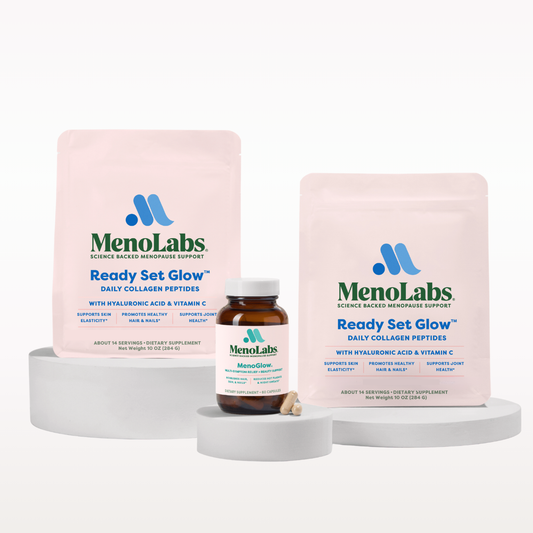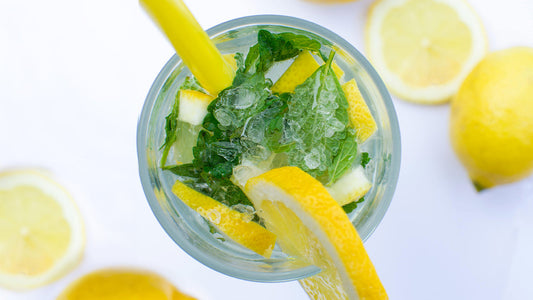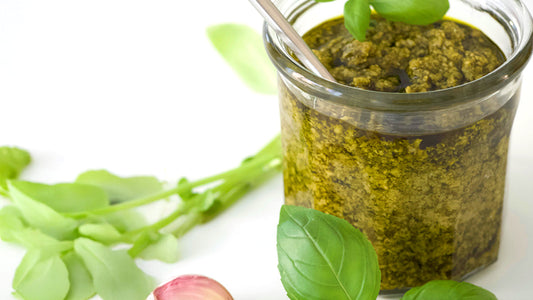Maybe you think it’s just an old injury. Or arthritis. Maybe you only feel it in the mornings, or just after you work out. Maybe you've tried to tell yourself you should just ignore it. Whatever causes it, joint pain in midlife is your body’s way of telling you something has changed — and part of that change is menopause.
More than half of us experience joint pain around menopause, according to research published in Maturitas. That’s partly just because of age — osteoarthritis, the leading cause of joint pain, boils down to basic wear and tear on our joints. But people in peri/menopause are especially at risk for joint pain because estrogen — which protects against inflammation — is in decline in our bodies, leaving our joints less healthy and resilient than they were in the past.
When you’re feeling burn or achiness in your joints, start by knowing what you’re looking at — pain or soreness. If it’s soreness, you just need a little recovery time. “Soreness usually goes away after a day or two; it gets better on its own,” says Rosanna Baita Lake, an ACE-certified personal trainer who specializes in training women ages 35 and older. “If it continues, you’re talking about pain.” Pain is also characterized by sharpness or intensity, or sometimes just a sense that something is wrong.
If you’re dealing with pain, whether it’s acute or chronic, don’t mess around. “Always back off joint pain,” says Lisa Swanson, a health coach and ACE-certified personal trainer focused on working with women over age 50. “Don’t try to work through it.” If you do, you risk a longer-term injury, putting yourself out of commission for far longer than you would if you’d just taken a week or two off.
For ongoing pain, talk with your doctor to see whether you’re dealing with a more systemic condition such as rheumatoid arthritis (which is different than the more common osteoarthritis). From there, they can help you determine the right course for you, whether that’s medical care, physical therapy, or another treatment plan.
And to avoid getting injured in the first place, working with a personal trainer or coach can help you develop a well-rounded, injury-deflecting fitness plan. “You need to have a balance of functions,” Swanson says. “A trainer will work with you on mobility, on strength, on stability, and all of that plays a role in joint pain. It’s so much more complicated than, ‘Hey, my knee hurts, can I have an exercise for that?’”
Movement Tips to Prevent Joint Pain in Menopause
- Don’t ignore exercise. “Motion is lotion,” Swanson says. “If you don’t move your body, you’re not going to lubricate your joints.” Full-body low-impact exercise helps your body make better use of synovial fluid, a substance that eases friction between joints. Bicycling, swimming, and walking are joint pain-friend exercises, as are strength training and exercises that use flowing movement, such as yoga and tai chi.
- Use proper form. “If you don’t have proper form in an exercise, you’re not going to be moving correctly, and you can easily put too much pressure on your joints,” Swanson says. If you are new to strength training, work with a coach or personal trainer who can advise you on the proper form. If you’ve been training for a while, it still might be a good idea to have a check-in with a professional — it’s easy to let your form slip over time.
- Progress your exercise slowly. If you’re strength training and are using a weight that’s too heavy for you, you’re probably compensating somewhere to be able to lift it — and that “somewhere” could be a joint. “Everyone says that they want to train hard, and yes, you do,” Swanson says. “But not at the expense of your joints.” Lake recommends figuring out the heaviest weight you’re comfortable with, then scaling that back by at least half until you’re fully comfortable with all of the movement patterns.
How to Find Relief from Menopause-Related Joint Pain
- Use a foam roller. This fitness tool can be found in stores or online for less than $20, and it’s helpful no matter where you are in your fitness journey. A few minutes spent rolling out the major muscle groups before stretching helps relax fascia — the connective tissue that protects your joints, bones, and muscles — preparing your body for the motion to come.
- Get loose. “People know to warm up their body before a run,” Lake says. “But you also need to warm up before you lift weights, before you play sports.” Maybe even before you stretch: Jumping right into a stretching sequence can strain your muscles and joints. If you’re a morning exerciser, walk around the block before launching into a stretch.
- Stretch — gently. Respect where your body is at when it comes to flexibility. A stretching routine that’s gentle for someone who has been exercising regularly for years might be too much for a beginner. “I could say, ‘Let’s do body-weight squats,’ because squats are great for hip mobility,” Swanson says. “But if somebody can’t do a squat yet, what can they do? We’ll need to scale back a bit. Or, for experienced exercisers, scale it up.”
- Try massage or acupuncture. You might recoil from the idea of being touched when your joints are tender. But in fact, massage can help reduce inflammation, which in turn reduces pain by increasing the blood flow to stiff joints. As for acupuncture, some research has shown moderate relief from osteoarthritis symptoms; anecdotally, some people find that it helps with joint pain. When Lake experienced joint pain in her left arm in her early 40s, she found acupuncture to be a “miracle cure” — but one that works best in conjunction with other prevention and relief measures.
No matter how you find relief, remember: This isn’t a place to self-diagnose or cobble together a DIY treatment plan. Your elbow pain may be caused by a different issue than your friend’s elbow pain, so copying her treatment plan without consulting a professional may aggravate your condition. But preventing joint pain? That’s something you can do anytime — starting now.
Autumn Whitefield-Madrano has been writing and editing content for and about women for 25 years. Her book, Face Value: The Hidden Ways Beauty Shapes Women's Lives (Simon & Schuster, 2016), has been called "a valuable addition to contemporary feminist writing" and "smart, even-handed, and personal" by leading media outlets.
Related Products
Blend Besties Bundle
Fresh Start Bundle
4.7 / 5.0
(551) 551 total reviews






